
email us
ted@chattanoogaroofingco.com

call us now
(423) 308-ROOF
Search Results
- Home > Search results for 'asphalt shingles'
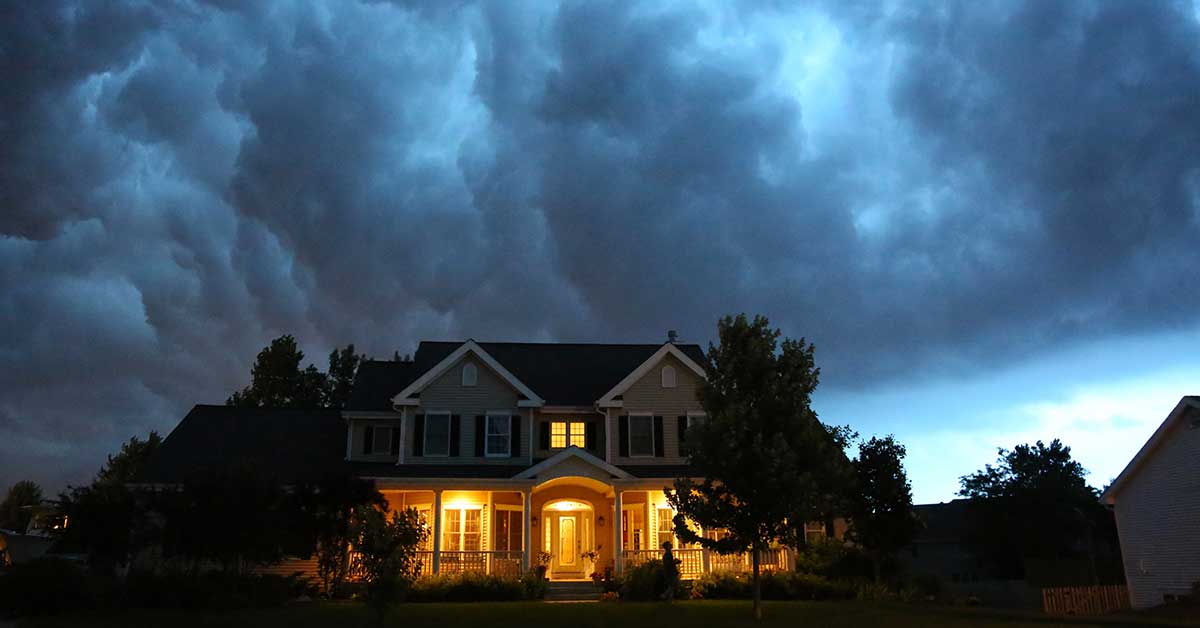
20 Jul. 2021
How Do I Protect My Roof from Summer Storms?
Like many homeowners during thunderstorm season, you might be asking “how do I protect my roof from summer storms?” Aside from the heat, we also need to deal with storms during the summer. You need to prepare your home. Why? Because these storms cause strong winds and heavy rains that could wreak some serious havoc on your roof. The roof serves as your first and last line of defense against extreme weather. For that reason, you need to make sure it can withstand the strongest of storms. The goal is to prevent water and property damage.
How Do I Protect My Roof from Summer Storms?
The first thing you need to do is to inspect your roof. Look for leaks inside the house, and watch out for damaged shingles from the outside. Also check the exterior features of your roof for damage. This includes your chimney, vents, skylights, fascia, and soffit.
If you are not able to conduct a full inspection, you can ask a roofing company to do a professional assessment on the current state of your roof. Doing so allows you to spot problems early on and have them fixed. That way, your roof will be 100% able to protect you when the next storm rolls in.
The second step is to clean your gutters. Your gutters won’t be able to successfully divert rainwater away from your house if they are clogged. To ensure that water comes off easily from your roof during a heavy downpour, remove fallen leaves, loose asphalt granules, and other debris from your gutters. You also need to trim the trees on your property to prevent branches from falling on your roof in the event of a heavy storm.
Secure exterior furnishings in the event of a storm. Your patio furniture, hammock, flower pots, external lights, and many more should be secured in their place or be brought inside so as not to damage your property.
The last – and most important – step is to call Chattanooga Roofing Company at (423) 888-0258. Any small problem – a small leak, a torn shingle, or a broken skylight – can turn into a bigger one if left unattended. Hiring a roofer will save you money in the long run because you’ll have a roof above your head that can withstand extreme summer storms.
- By: chattroof
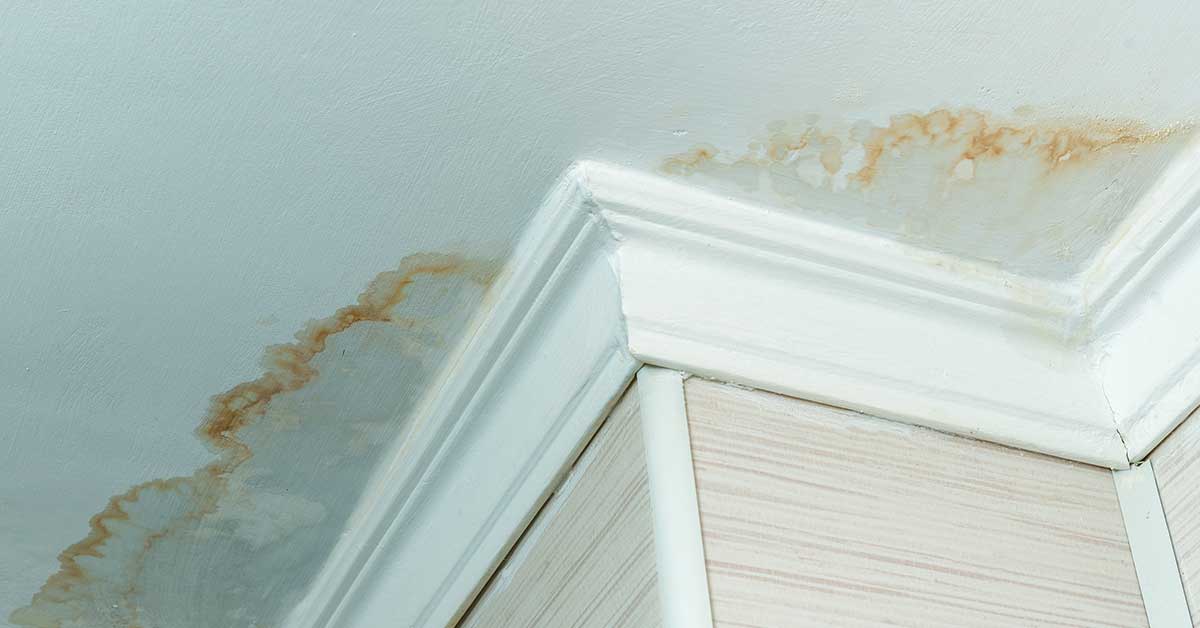
26 May. 2021
5 Signs Your Roof is Damaged
When was the last time you inspected your roof for damage? If you don’t know the last time, or worse, you haven’t inspected it at all, this spring would be a good time to do so. We will describe the 5 signs your roof is damaged.
Keep on reading to find out if your roof has damage – and if you’ll need the help of a roofing contractor.
5 Signs Your Roof is Damaged
Water stains
If you see stains running along the ceiling and walls of your house, you need to have your roof checked. If left untreated, these small stains could lead to bigger problems over time such as rotting framing, destroyed insulation, and weaker foundation structure.
Damaged shingles
After checking for stains and leaks, go outside and check the shingles on your roof. Are all of them still lying flat on the roof? Have you noticed some shingles that appear cracked, loose, or maybe missing? Have you seen some asphalt granules on your downspouts? If so, you’ll need the help of a professional to replace these shingles.
Damaged flashing
Roof flashing is a piece of metal that protects the area around chimneys, vents, and skylight windows. It redirects water away and prevents moisture from growing in these structures. Check your flashing for cracks or corrosion. If it has been damaged, you’ll need to have it replaced with one that is made of sturdier materials.
Presence of mold
Rainy weather and humid days can cause algae, moss, and lichens to grow exponentially in your roof. These can also create health problems for the family, attract pests, and make your roof unsightly. In addition, ask a roofing expert to come over and clean the roof as soon as possible to minimize the damage and staining.
Presence of pests
If there are rodents in the attic, there could be a gaping hole in the roof that allows these pests to enter. Lay out animal traps to find out their entry and exit points, then seal them. If the infestation is extensive, you’ll need the help of a pest control company.
If you suspect your roof has damage call Chattanooga Roofing Co. at (423) 443-4174.
- By: chattroof
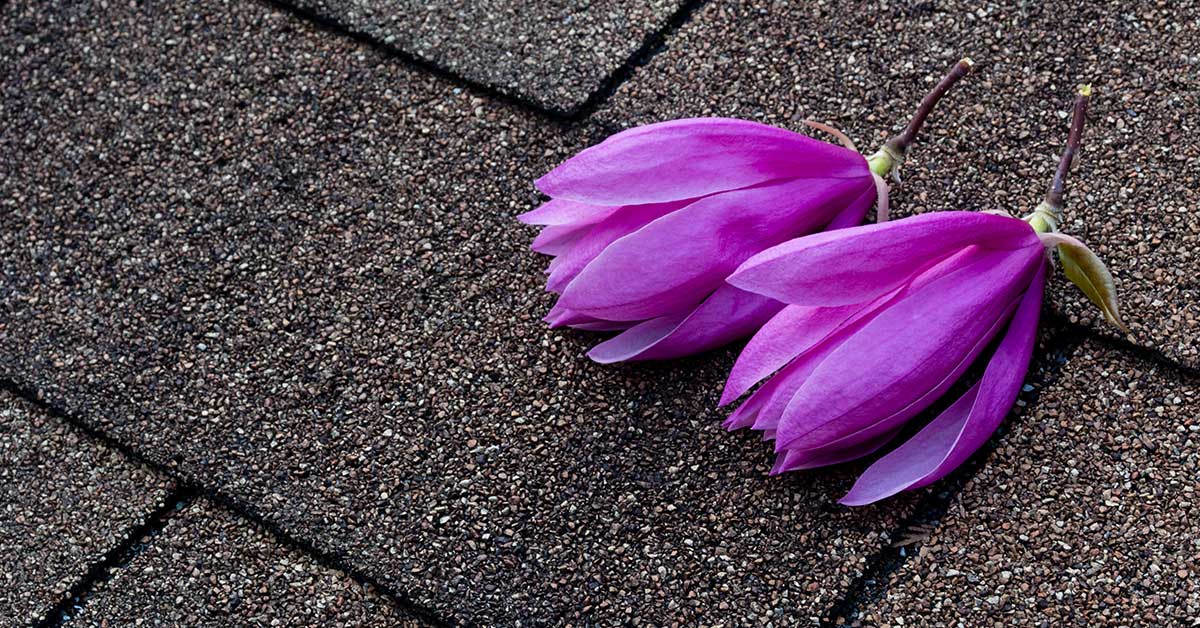
26 Apr. 2021
Is It Important to Keep Pollen Off My Roof?
Now that spring is here, expect the annual flooding of pollen all over your property. Are you wondering is it important to keep pollen off my roof? Don’t be surprised if your roof and siding get suddenly covered in yellowish dust.
When it comes to spring cleaning, most homeowners neglect the roof above their heads. That is because removing pollen from one’s roof is not a spring activity most people look forward to doing.
Unfortunately, pollen can cause health hazards, unsightly stains, and costly roofing issues that could have been easily prevented in the first place.
1. Target the Right Places
Aside from closing your doors and windows and installing HEPA filters, you also need to have your roof checked by a professional roofing contractor. This way, they can check if your roof has become an entry point for pollen. The contractor will make sure that the attic insulation and air vents have been properly installed and functioning properly.
2. Clean the Roof
You can rely on rain and time to help remove pollen build-up. But if there’s huge amounts of it, it may be time to get up on the roof and remove the pollen. However, there’s a risk of getting injured while you’re up there if it’s a steep roof or you’re less mobile than you used to be. In that case, you’d be better off leaving the cleanup to the roofing professionals.
3. Update Your Roof
If your roof has been retaining more pollen than usual because of pitting or curled shingles, then it may be time to have it replaced. Old, decaying asphalt roofs are more likely to catch allergens as they age. Check with your local roofer to see if your roof is up for a replacement, or if they can still do repairs.
Contact Us Today for Roof Repair
Spring is definitely the worst time of year for pollen to collect on your home, especially on your roof.
Removing pollen from your roof may help lessen your allergy symptoms, which is why you should make roofing maintenance a part of your spring cleaning checklist.
To learn more about our spring maintenance services, please contact Chattanooga Roofing Company. Just call us at (423)-401-2448 today.
- By: chattroof
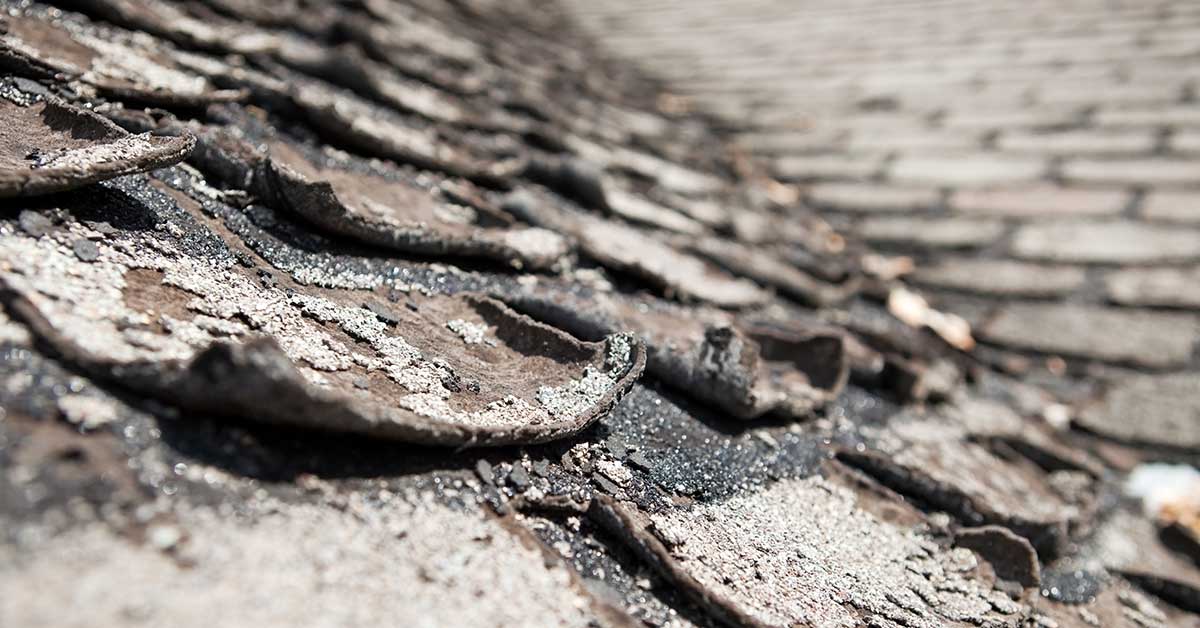
24 Mar. 2021
What are the Signs Your Roof Needs to Be Replaced?
Are you wondering what the signs your roof needs to be replaced are? Can you tell if your roof even needs a replacement? Sometimes, the signs are obvious, like having a huge gaping hole in the middle of your attic. Other times, the signs are subtle, and you’ll need to delve deeper and seek the help of a roofing professional to determine if you need a roof replacement.
Read on to discover some signs to watch out for when it comes to your roofing system.
Signs Your Roof Needs to Be Replaced
1. Old Age
An asphalt shingle roof typically lasts for 20 years, while a metal roof will have a longer lifespan. If your roof is more than 20 years old, consider getting a roof inspection for damage that remains undetected.
2. Leaks
Have you noticed leaks, water spots, sagging parts, and rotting tiles? These are signs that your roof has been rotting from the inside for quite some time.
3. Loose Shingles
If you see any curling or broken shingles on the top of the roof, it might be time for a replacement. In addition, if you spot granules from the gutter, that means you have loose shingles. Your roof is vulnerable from the outside. Any damage will lead to further damage and roof decay if you don’t replace the shingles. If just a couple of shingles are damaged, replacing them is easy. However, if the damage is widespread, then it’s time for a replacement.
4. Ice Dams
If you have ridges of ice forming at the edge of your roof at the gutters, that means the ventilation of your roofing system is compromised. The pressure coming from the ice can damage the inner layers of the roof and if this goes untreated, it’s only a matter of time before water can seep inside the house.
5. Damaged Flashing
If your roof is really old and has corroded flashing, it can be a weak spot that will allow water to penetrate. For that reason, consider having the flashing replaced with a new metal flashing system.
6. Algae Growth
If you spot dark or green streaks, then algae or moss is present. Excessive growth of these two means moisture is present and can also cause the shingles to deteriorate.
What should you do if you spot any of these signs?
Chattanooga Roofing Company can provide you with a thorough assessment of your roof to see if it can still be repaired. In addition, we can let you know if it needs a complete overhaul. Just call us at (423) 401-2448 to book a service appointment!
- By: chattroof
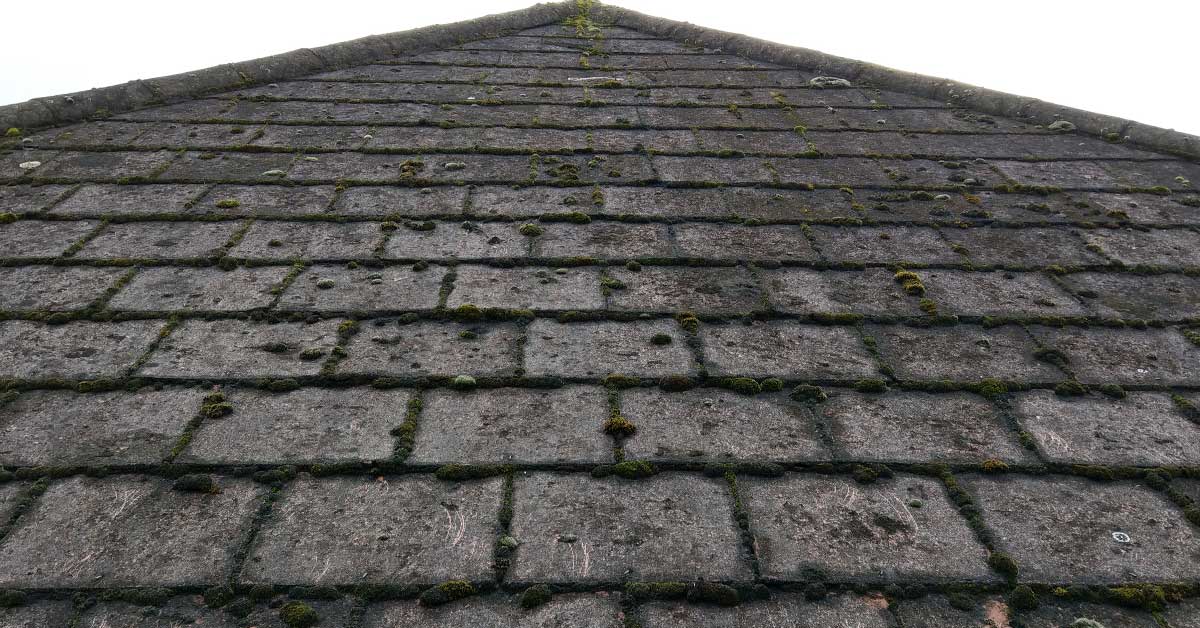
19 Feb. 2021
Why Your Roof Looks Dark and How to Prevent It
Have you been doing a spot check of your asphalt shingle roof and noticed some dark streaks all over it? It could be a combination of many things — accumulated dirt, damaged shingles, or mold. You may be wondering why your roof looks dark and how to prevent it. Let’s look into this a bit more, and hopefully you’ll know how to fix it when this article is done.
More often than not, the culprit is actually a blue-green algae known as Gloeocapsa Magma. The spores of this algae are airborne and can be carried over to your roof by heavy and strong winds. The crushed limestone filler used in your asphalt roof will serve as their main food source. The hot and humid summer experienced in the southeastern part of the US will also contribute to the algae’s growth.
Although the algae won’t harm your roof in any way, its presence could be a major eyesore to an otherwise cozy home. This algae begins as small spots on your roof, but if left unattended, the spots become long streaks of monstrosity.
Removing the Dark Algae Streaks on Your Roof
We’ve talked about why your roof looks dark, and how to prevent it is next up. To prevent this algae from marring your home, you can ask your roofing contractor to choose an algae-resistant roof if you are in the process of a roof replacement.
However, if your existing roof has already been affected by this algae, there are lots of chemical cleaning agents that can be used.
Take note that there will be risks involved in cleaning your own roof. Going the DIY route could void your roof warranty or homeowner’s insurance policy. In addition, you may not have the right roof cleaning materials. You also might not have the spare time to clean. And, even if you do, you could end up hurting yourself in the process.
Cleaning your roof is better left in the hands of professionals. For a consulation about removing those ugly black streaks, please contact Chattanooga Roofing Company at (423) 401-2448 today.
- By: chattroof
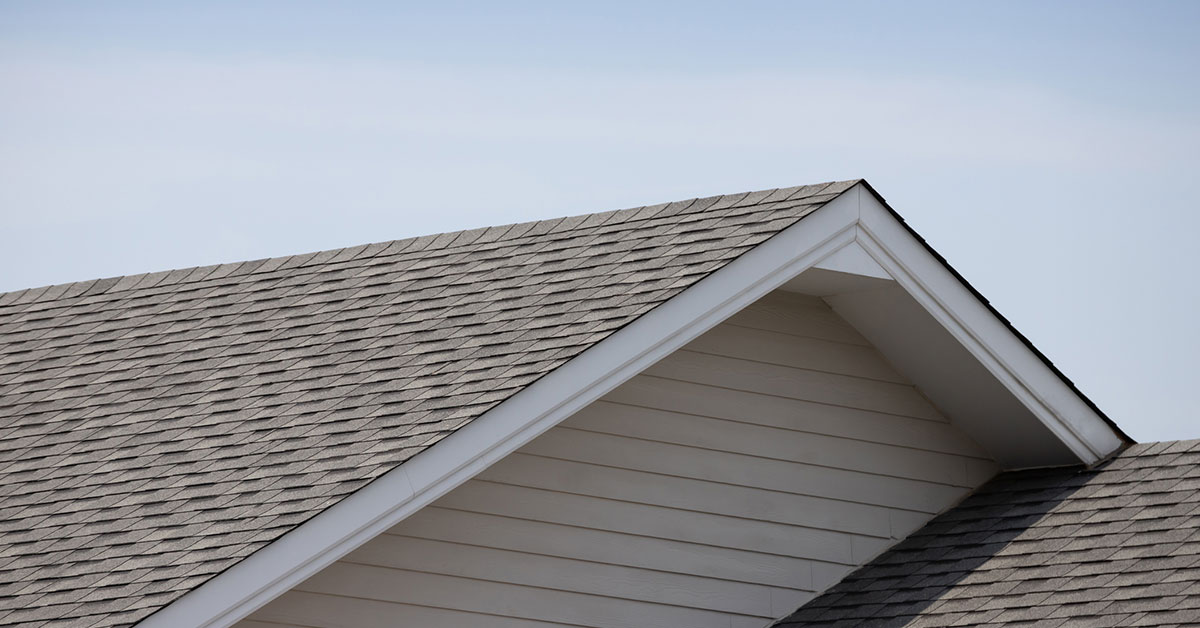
19 Jun. 2020
How Summer Affects Your Roof: 3 Big Ways
Now that summer is almost here, you need to check your roof to make sure it is ready to face the upcoming season. This can be an easy time for homeowners to forget their roofs. No leaves accumulating in the gutters, less rain … the roof is under less stress. Right? Wrong. Keep reading to discover exactly how summer affects your roof.
How Summer Affects Your Roof: 3 Major Ways
1. Wear & Tear
Increased exposure to direct sunlight can damage the roof. Especially if it has been getting on in years. Most asphalt roofing systems are built to last. They usually have a lifespan of 20 to 30 years, but even those have their limits.
Once the heat is too much to bear, the shingles can curl and dry up, making them brittle and prone to cracking. If your roof has significant damage and is nearing the end of its life, consider having it replaced before the onset of summer season.
2. High Humidity Levels
Humidity is an uncomfortable reality of living in Tennessee, where the rise in temperature during summer will result in extremely humid conditions. During this time, moisture and condensation can settle in between the shingles and the underlayment, resulting in water leaks. Once the moisture collects, it also gives room for mold spores to grow and endanger your family’s health.
3. Thermal Shock
During the summer, the roof reaches extremely high temperatures during the day and quickly cools off once the sun sets. This causes the roofing system to expand and contract. It’s one of the biggest ways how summer affects your roof.
The constant variation in temperature causes tension in the roofing material and leads to thermal shock, which ultimately weakens the structural integrity of the roof and ages the shingles.
Contact Us Today
Most of these roofing problems happen over time, meaning your roof won’t crumble to dust after just a couple of days of warm weather. But if your roof is old and damaged, then you need to keep an eye out for these issues and address them promptly before they worsen.
While you can’t keep the sun from shining down on your roof, there are a couple of things you can do to lessen the damage of summer heat. You can have a professional roofing inspection done to spot problems early on and have them fixed.
Now that you know how summer affects your roof, take action! Simply call the Chattanooga Roofing Company at (423) 888-0258 for roof inspections and general maintenance. We’ll catch problems early and do repairs if needed.
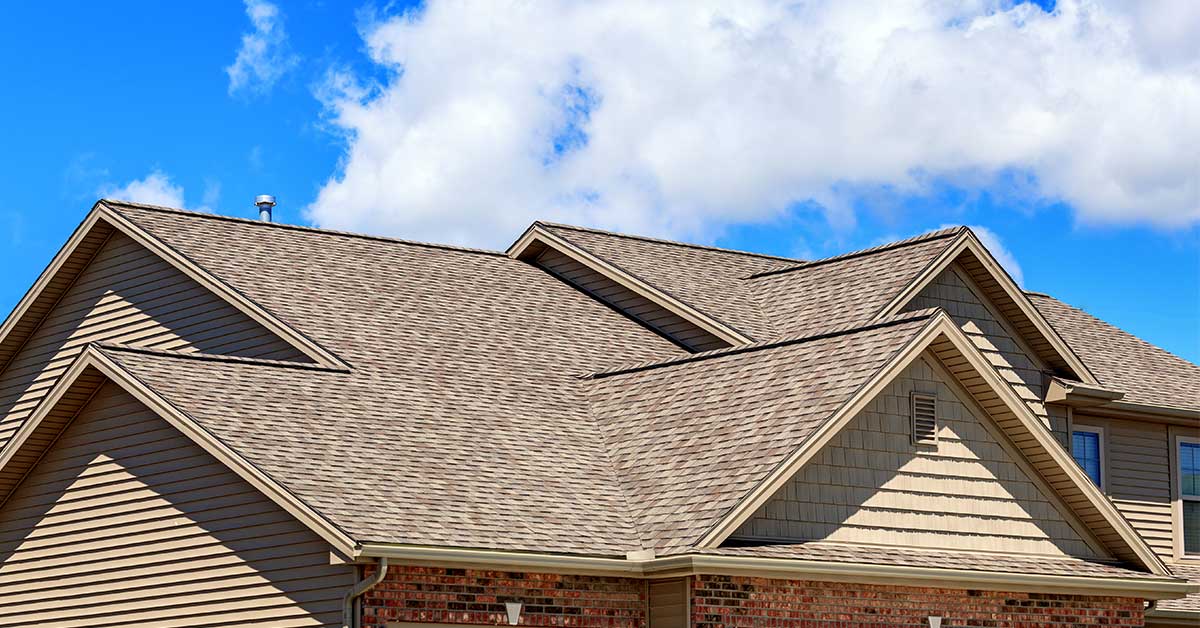
23 Sep. 2019
6 Most Important Parts of a Roofing System
As a homeowner, you need to know the components of your roof. To that end, it’ll help you to learn the most important parts of a roofing system. Doing so will help you understand how your roof works. And, it should help you determine if a roofing issue can be resolved on your own or needs to be looked at by a professional.
Remember: in order to have a roof that will last you for a very long time, it needs to be installed properly as a complete system.
Here Are the 6 Most Important Parts of a Roofing System
1. Underlayment
A felt-like barrier installed on the roof’s decking. It provides an extra layer of protection in case water seeps beneath a broken or torn shingle.
2. Flashing
A thin strip of aluminum or galvanized steel. It helps cover the gap between a roof and a chimney, vent pipe, or any other vertical surface that intersects with the roof.
3. Shingles
Flat, rectangular pieces made of asphalt, slate, wood, or flagstone. They overlap to make up the outer surface of the roof.
4. Starter Strips
A type of shingle installed along the eaves and rakes of the roof to prevent wind damage. This is done after the installation of the underlayment and before the installation of the regular shingles.
5. Ridge Cap Shingle
Another type of shingle that covers the ridge areas of the roof, which are high-stress areas that need more protection. It also adds character and depth to the roof. This performs the dual service of making it look better while protecting your home.
6. Gutters and Downspouts
The drainage system that channels rainwater from the roof to the ground. Proper gutters are essential to a home’s long-term structural integrity.
How to Achieve a Great Roofing System for Your Home
Installing a new roof or replacing an old one is a major investment in your home. You need to ensure that the entire roofing system is properly installed. For that reason, working with the best roofing company in Chattanooga is the best way to make sure everything is right.
Now that you know the most important parts of a roofing system, you know how much you need good installers. If you’re looking for a roofing contractor you can depend on, look no further than Chattanooga Roofing. Our team of roofing specialists will ensure that every part of the roof – from the shingles down to the gutters – will last longer and perform better. We will get only the best roofing accessories and shingles to increase the life span and function of your new roof.
With our help, you can have a roofing system that is properly installed along with its necessary components. Contact us today at (423) 308-ROOF or fill out our online form to get your free consultation with a roofing professional.
- By: chattroof
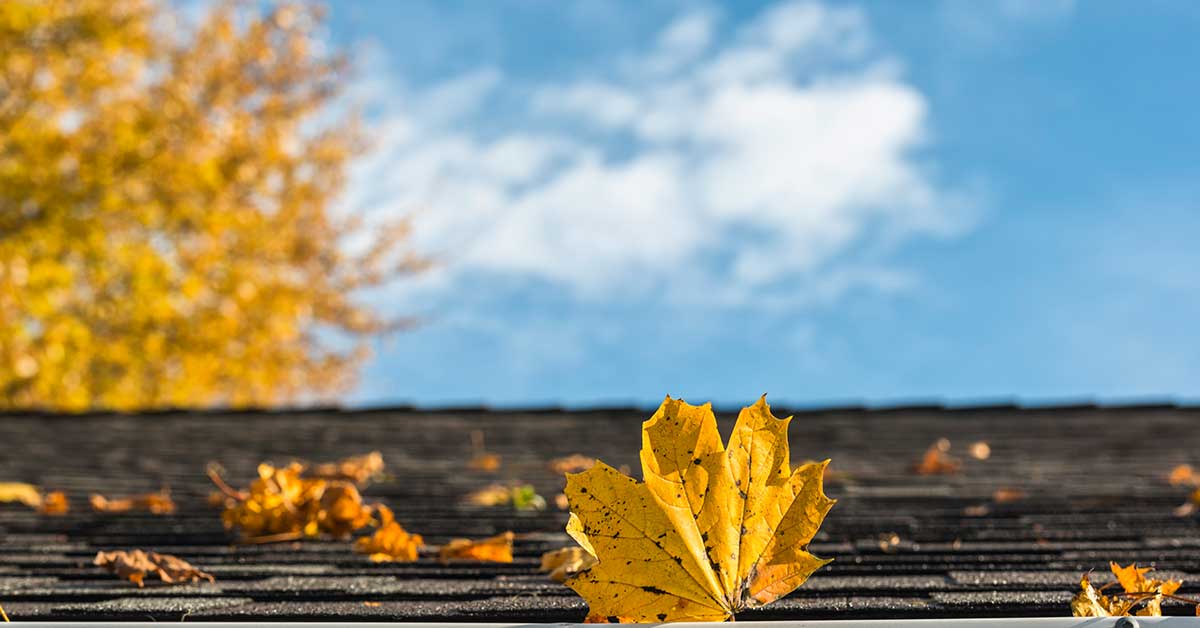
03 Oct. 2018
6 Reasons Why to Replace Your Roof in the Fall
Summer is sunny and spring is balmy, but there are more reasons why to replace your roof in the fall. When it comes time to install a new roof, there’s no better season. Not too hot, not too cold, not too wet (usually). It’s a good time to prepare your home’s protection against winter weather.
You’ll want to schedule your roof replacement in advance because your roofing contractor will be busy during this time of year. But why is he so busy? Because homeowners are starting to figure out that fall is the best time for roof replacement. Allow for schedule flexibility and you should enter winter with a snug new roof over your head.
Ready to discover what many homeowners already know? Read on to learn more about why to replace your roof in the fall.
6 Reasons Why to Replace Your Roof in the Fall
If you know your roof needs repair or replacement, you should wait until autumn for this short list of reasons.
1. Stormy Season is Over
Spring and summer have far worse weather than fall, in terms of severe rainfall and winds that can damage roofs. The generally milder weather of fall makes it the perfect time to replace your roof without being interrupted by strong wind and thunderstorms.
2. Conditions Couldn’t Be Better
Roofing professionals consider temperatures between 45 and 50 degrees Fahrenheit the best-case scenario for installing roofing. That range is especially important if you’re having an asphalt shingle roof installed. In these conditions, your shingles will be able to form a thermal seal, bonding with each other and the roof. And your roofers will be able to work faster without overheating.
3. Cold Weather Hasn’t Fully Hit
When the temperature drops, shingles get harder to work with. They can become brittle, vulnerable to breaking when your roofer is using a nail gun. That means the job will take longer (and cost more) because brittle shingles require hand nailing.
4. There’s Time for Proper Sealing
Get your roof replaced in fall to give the shingles time to form a proper bond with the roof. They won’t be able to bond perfectly once wet, cold weather hits your area. A better bond means better insulation and protection from damp.
5. Winter Storms May Come
What can make a damaged roof worse? Harsh, cold weather. Over the winter, holes can get larger and leaks can become worse. You’re better off entering winter with a sound roof over your head.
6. You Could Save on Heating
Because roofing gets thinner over its lifespan, its insulation ability gets weaker and weaker. That’s one of the best reasons why to replace your roof in the fall. If you do so, you’ll benefit from better insulation all winter long. After all, who doesn’t want a lower heating bill?
Now you know why to replace your roof in the fall. With such compelling reasons, there’s no time like today to get the job done. Call Chattanooga Roofing at (423) 308-ROOF or schedule your free roof replacement estimate online today.
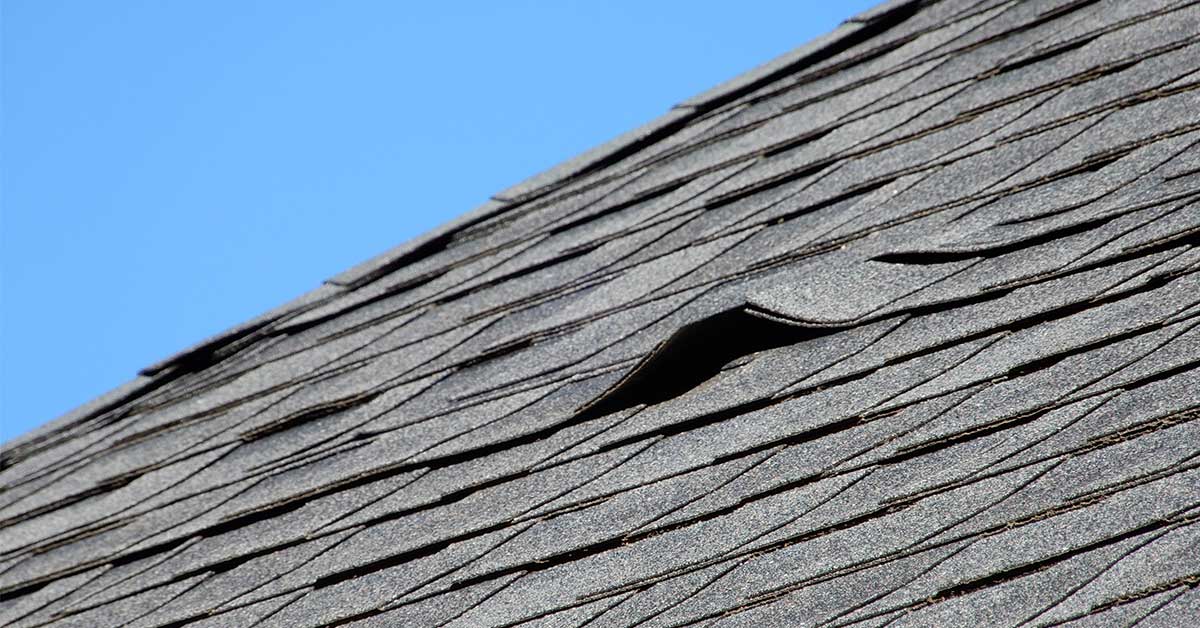
06 Sep. 2018
Roof Damage From Wind: What Is It, and How Can I Spot It?
According to Travelers Insurance, roof damage from wind made up an astonishing 25 percent of all homeowners insurance losses from 2009 to 2015. High winds can damage your roof, especially if it’s older or if your home is often exposed to forceful wind.
Wind can cause a few different kinds of damage to your roof. These include leaks, torn away or broken shingles, and gutter blockage. Asphalt shingle roofing receives the most damage from wind – even though it’s sturdy and rated to hold up under 90 mph gusts. If the wind is sustained, it can wear away at the integrity of shingles and start to damage them at 50 mph. Knowing how to check for roof damage from wind is vital to your home’s long-term health.
What Is Roof Damage from Wind?
Wind is unpredictable. It can damage areas that seem strong while leaving weaker areas alone. That’s because the wind doesn’t hit the entire surface of your roof with the same amount of strength. Corners, edges, and the exposed ridge suffer most frequently from wind damage.
For instance, where shingles hang slightly over the edge of your roof, wind can get under it and curl it up – or even rip it clean off. This is the type of damage that’s easiest to spot visually. Anytime wind removes a shingle, the roof will develop a leak in that spot (and anywhere below it, since water runs downward).
In addition, high winds can “lift” shingles without removing them. Most often, this is caused by suction from the wind passing over the top of the shingles, rather than getting under them. In this case, your roof may look intact from the ground. But all the while, water is seeping underneath the loose, lifted shingles. Lifted shingles lead to broken sealant – and leaks over time.
As another example, debris blown by high winds can tear apart your shingles. Tree limbs are a particularly common culprit here, so make sure you trim away any branches that reach over your roof. If you have trees next to your house, you’re likely to experience this type of roof damage from wind. In fact, high winds don’t cause as much damage as the debris blown by them does. They may look pretty, but those overhanging trees are a hazard.
How Can I Spot Roof Damage from Wind?
Look for these signs of roof damage caused by high wind.
1. Leaky Roof
Leaks in your roof are the easiest way to spot damage. However, a leak is the last thing you want. Don’t wait until your ceiling is dripping to check for damage. After each session of high winds, check for damaged shingles before you have a water problem. And, if a leak does appear, call a trusted roofer right away!
2. Missing, Lifted, or Curled Shingles
You should be able to spot missing and curled shingles from the ground. Look especially at the roof’s stress points: edges, corners, chimney, valleys, and ridgeline. These spots will let water through to the sub roofing – and into your home.
On the other hand, lifted shingles are hard to spot unless you’re on the roof. What may have happened is that the nails have become looser, and the layer of sealant may be broken. You’ll want to have your roof professionally inspected from time to time, especially if your roof has a steep pitch or your home has more than one story.
3. Granules in the Gutter
Extreme wind and pounding rain can strip protective granules from your shingles, washing them into the gutter. After a rainstorm, especially one accompanied by high wind, check the gutter for an excess of granules. If you find more than normal, call a roofer to check the shingles.
4. Damaged Chimney Flashing
This should be a quick check, but you’ll need to be on the roof to do it. Inspect the flashing around the chimney to see if it’s split or missing. Because it’s a vulnerable stress point, your chimney flashing is an especially common location for roof damage from wind.
Like always, a high-quality roof installed by an experienced roofing professional is your best defense against wind damage. Don’t cheap out – you may end up paying more in the long run. Call a licensed and insured roofer with decades of expertise, like Chattanooga Roofing Company. We’d be happy to inspect your roof for wind damage and give you a free estimate!
visit Us: 529 S. Germantown Rd. Chattanooga, TN 37411
email us: ted@chattanoogaroofingco.com
24/7 Emergency call (423) 308-ROOF

